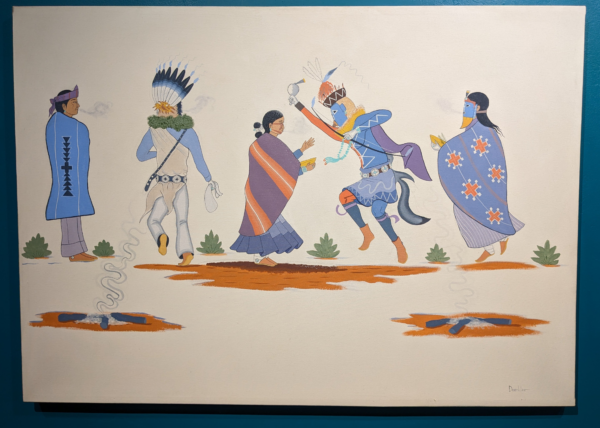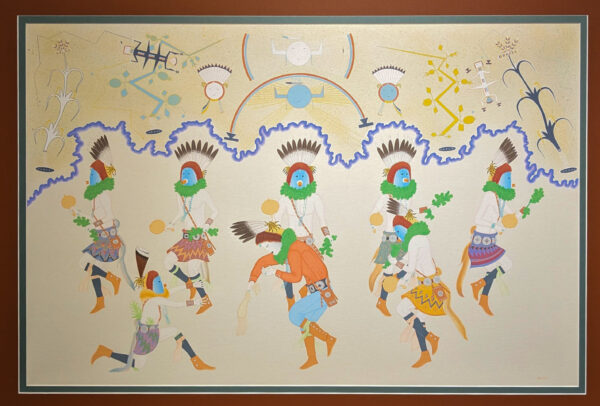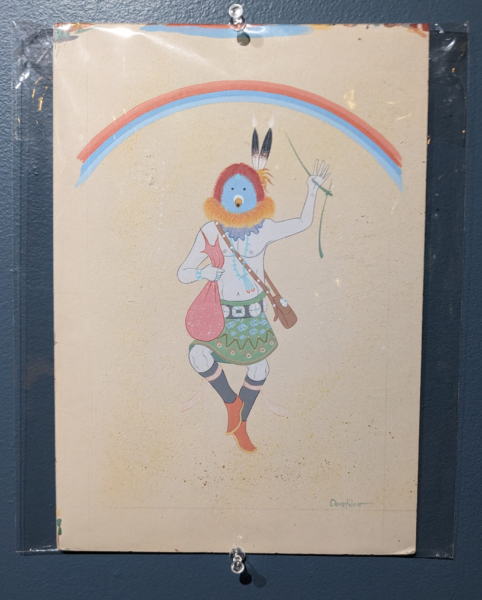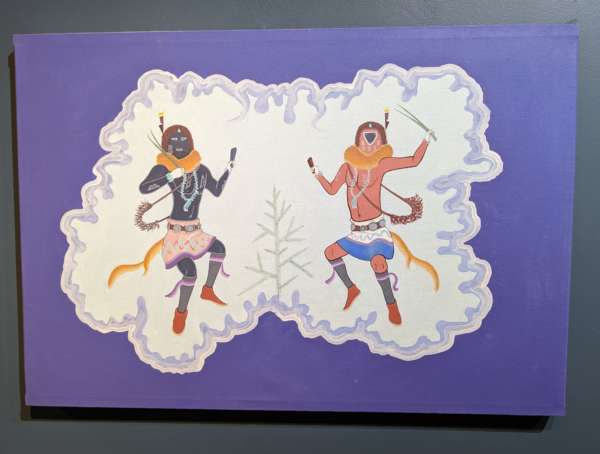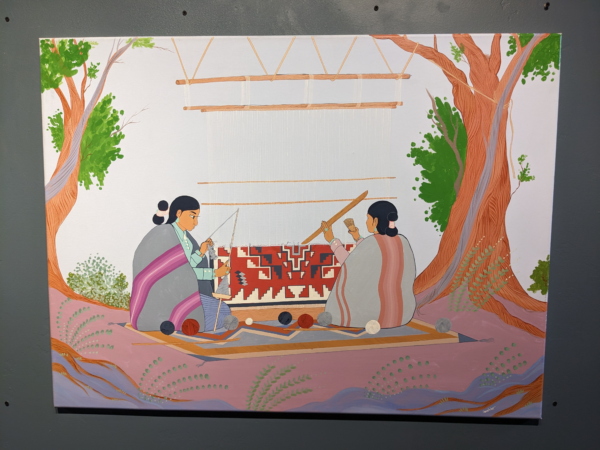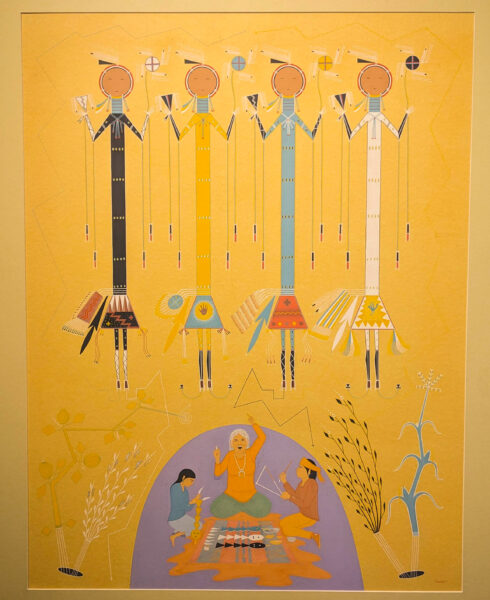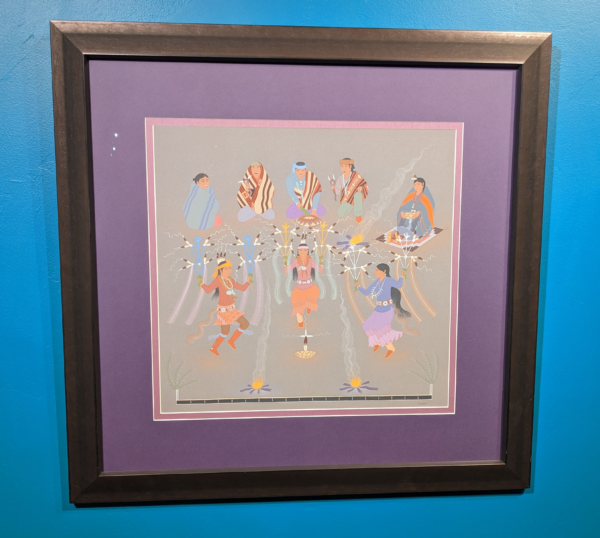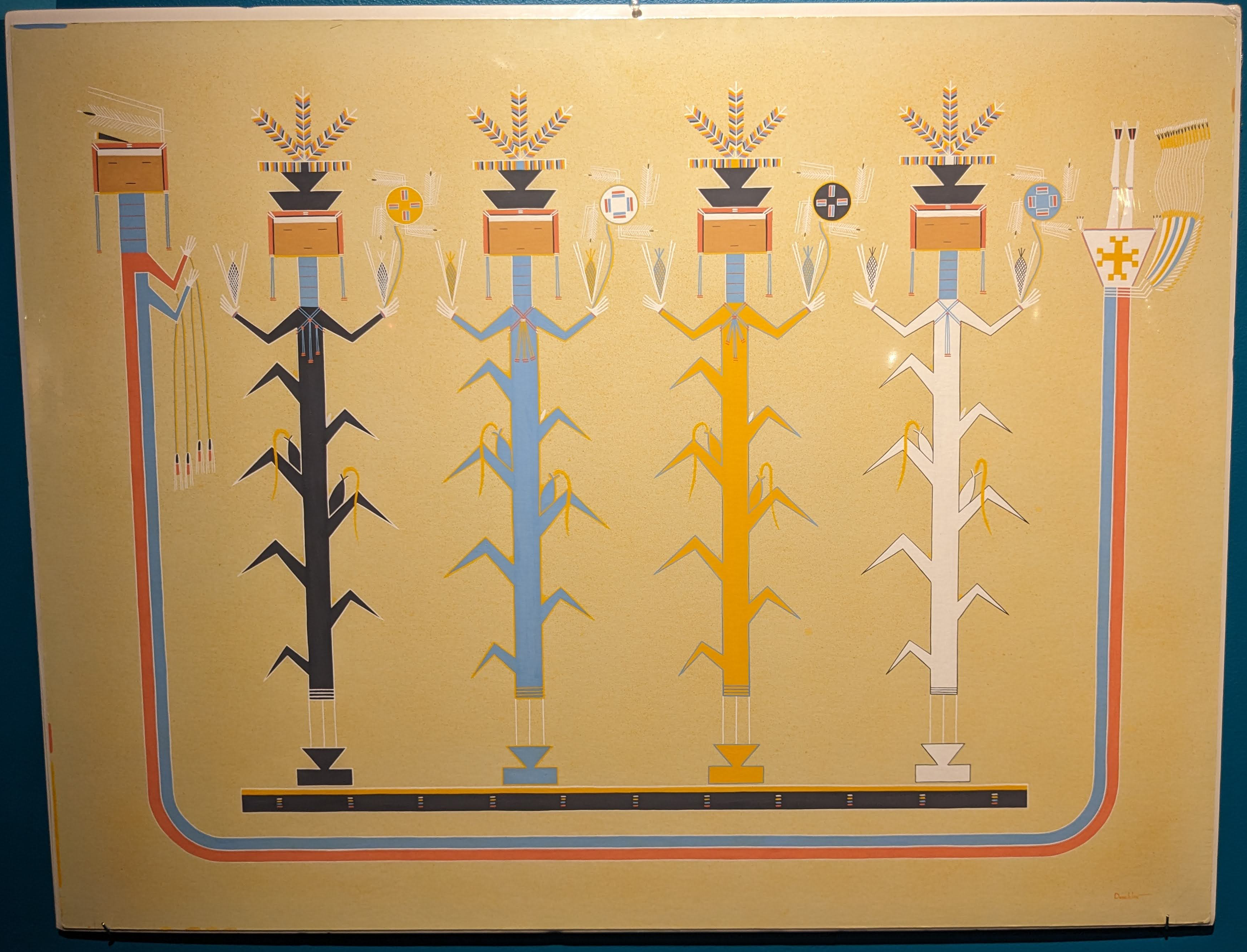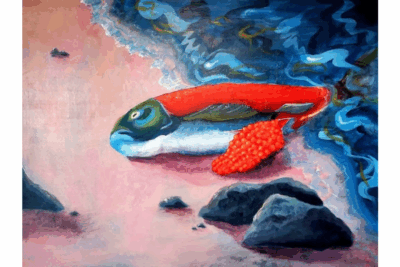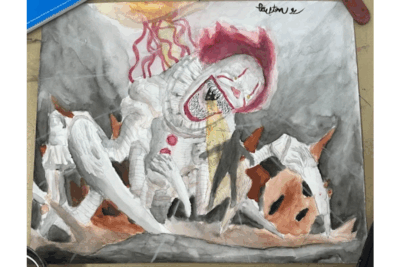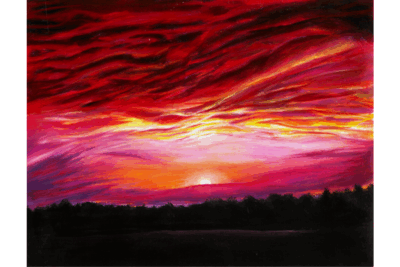This past summer, I went on the Southwest Indigenous Perspectives SST and had the privilege of hearing from several Navajo artists during my time out west. One of those artists was Myron Denetclaw, a fifth-year art major at Diné College.
In this painting, Denetclaw — meaning “left-handed,” even though he is actually right-handed — depicts four stalks of corn, each of different colors, surrounded by a rainbow. The four colors represent the four sacred mountains of the Navajo, with North being black, blue being South, yellow being West and white being East.The artwork is a recreation of a sandpainting, a ceremonial form of art in Navajo where a group of people create paintings on the ground with different colors of sand. The paintings are done all at once and then erased once they are complete. Since they are never meant to be copied and shown elsewhere, Denetclaw added several flaws to this painting to keep its true form private.
One flaw that he noted was the order of the colors: they are supposed to be depicted as black, yellow, blue, white, but were drawn in a different order. He assured us that there are many other differences between this painting and the true sandpainting, but telling us what those differences were would ruin the point.
He presented several other paintings depicting features of traditional Navajo beliefs and spirituality, which will be made available online in the digital edition of this week’s issue. 